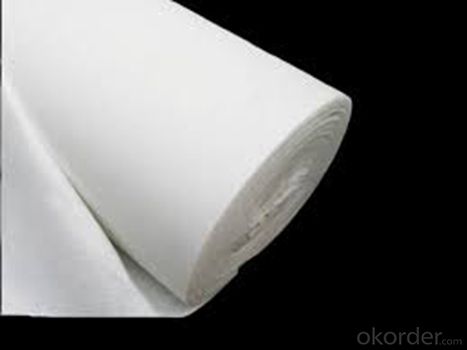- Understanding the Role of Geomembrane Liners in Waste Management
- Innovations in Geomembrane Liners for Water Management
- Geomembrane Liners: A Comprehensive Guide
- The Future of Geomembrane Liners in Civil Engineering
- Geomembrane Liners: Enhancing Landfill Stability
Manager:
WhatsApp:+86 177 0135 2670
Tel:+86 177 0135 2670
Email:marketing@okorder.com
Address:3rd Floor, No.2 Building, No.1 Sanlihe Road
Geomembrane Liners: A Barrier Against Industrial Chemicals
Geomembranes, also known as synthetic liners, are a type of flexible barrier that is used to contain industrial chemicals and other hazardous materials. These liners are made from high-density polyethylene (HDPE), polyvinyl chloride (PVC), or other polymers and are designed to be impermeable to liquids and gases. They are commonly used in landfills, wastewater treatment plants, and other industrial settings where there is a risk of contamination.

The Benefits of Geomembranes
Geomembranes offer a number of benefits when it comes to containing industrial chemicals. They are highly durable and can withstand a wide range of temperatures and chemicals. They are also resistant to UV radiation and can be exposed to sunlight for extended periods without degrading. Additionally, geomembranes are flexible and can be easily installed in a variety of shapes and sizes to fit the specific needs of a project.
Installation Process
The installation process for geomembranes is relatively straightforward. First, the surface on which the liner will be placed must be prepared by removing any debris, rocks, or other obstructions. The liner is then unrolled and carefully placed on the prepared surface. It is important to ensure that the liner is properly aligned and that there are no wrinkles or folds that could potentially lead to leaks. Once the liner is in place, it can be secured with anchors or other fasteners to prevent it from shifting or moving during use.
Maintenance and Repair
Proper maintenance and repair of geomembranes is essential to ensure their longevity and effectiveness. Regular inspections should be conducted to check for any signs of wear or damage. If a leak or puncture is detected, it can be repaired using specialized techniques such as heat welding or the application of a patch. It is important to address any issues as soon as possible to prevent further damage and contamination.
Environmental Impact
While geomembranes are effective at containing industrial chemicals, it is important to consider their environmental impact. They are made from non-biodegradable materials, which means they will not break down over time. This can lead to issues with waste disposal and long-term environmental effects. However, efforts are being made to develop more sustainable and eco-friendly alternatives to traditional geomembranes.
Personal Experience
I have had the opportunity to work with geomembranes in a variety of industrial settings. I have seen firsthand the effectiveness of these liners in containing hazardous materials and preventing contamination. However, I have also witnessed the challenges that can arise during installation and maintenance. It is crucial to follow proper procedures and take the necessary precautions to ensure the success of a geomembrane project.
In conclusion, geomembranes are an essential tool in the containment of industrial chemicals and other hazardous materials. They offer numerous benefits, including durability, flexibility, and resistance to a wide range of chemicals and environmental factors. However, it is important to consider their environmental impact and to properly maintain and repair them to ensure their effectiveness. With the right approach, geomembranes can provide a valuable solution for protecting the environment and ensuring the safety of industrial operations.
- Previous:The Use of Geomembrane Liners in the Construction of Green Roofs
- Next:The Role of Geomembrane Liners in the Management of Industrial Byproducts
-
2024-12-05Geomembrane Liners: A Comprehensive Guide






